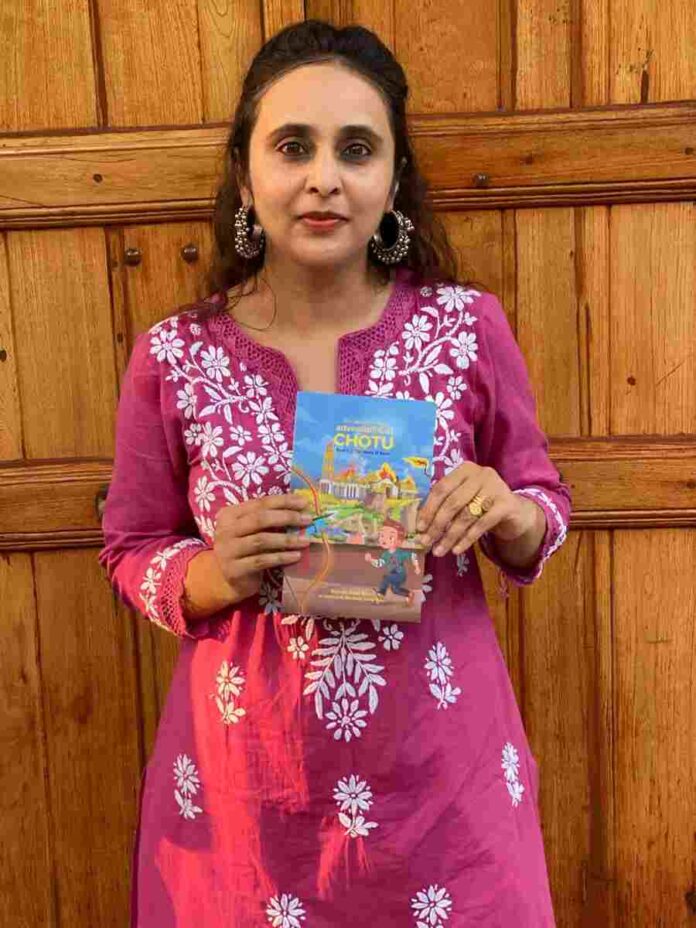Come along with Chotu on an incredible voyage full of exhilarating encounters and monumental discoveries! See the bold and inquisitive Chotu travel on thrilling adventures through enigmatic jungles, beautiful towns, and distant regions in this engrossing series. What remarkable experiences are in store for Chotu? Time will tell! Read the interview below to know the insights about the book and journey of Natasha as an author.
- What inspired you to write for a younger audience, and how do you approach crafting a story that resonates with children?
This story was unplanned. Every night, my son and I listen to Dr. Alok Pandey’s talks. During one of his talks titled “Lessons Learned from Rama,” my son Kabir became very interested in the Ramayana. As we discussed it, I suggested that a story inspired by this talk and Rama should be written. My son and I became so engrossed in the idea that we began weaving this story together. Once we shared it with Dr. Pandey, he agreed to guide us through this journey. That’s how this story came to be. I wrote it for my son, with him, and with the help of my spiritual guide and friend, Dr. Pandey. It turned out to be such a beautiful story that we felt compelled to print and share it with all children.
2. Children’s books often carry important messages. Can you tell us about the themes or values you aimed to convey in your latest book?
I wanted to share the messages and values that I learned from Rama. Of course, there are many, but mainly two stood out: the strongest are the calmest, and democracy existed in Rama’s kingdom 10,000 years ago, while the concept was unknown to the West. In Rama’s kingdom, everyone was equal; even a dhobi had a voice.
3. Illustrations play a crucial role in children’s books. How did the collaboration with the illustrator enhance the storytelling, and what was the creative process like?
Sadly, we couldn’t include many illustrations because this book targets an audience aged 8 and up. Books 2 and 3 contain a lot of content intended for older children, so we couldn’t use many illustrations. However, our cover page features a cute Chotu and a glimpse of Rama, maintaining suspense while allowing readers to imagine their own Rama.
3. Connecting with young readers is essential. How do you strike a balance between entertaining and educating in your children’s books?
Yes, it’s very important. We’ve ensured that although this book talks about Rama, it’s not preachy or boring like traditional mythology books. It has connected with many children because it’s adventurous, involves time travel, and like all children today, Chotu is a rebel with a mind of his own, questioning everything.
4. Your characters are charming and relatable. How do you create characters that children can identify with, and do they draw from your own childhood experiences?
Chotu is very relatable as many of his characteristics resemble those of my son. The questions he raises and the doubts he has about Rama are the same ones I had in my childhood, which were often left unanswered. When I met Dr. Pandey, he answered these questions, and so we have provided similar answers for Chotu through Vibhishana, who changed sides, left his brother Ravana, and joined Rama after realizing Rama’s divine nature.
5. In the digital age, children have various forms of entertainment. How do you see the role of children’s books in fostering a love for reading and storytelling?
Children’s books are like a saving grace in this digital age, helping to develop reading habits from an early age. Thanks to parents’ awareness and school reading programs, children are reading more, creating a demand for children’s books, especially those that explore Indian culture and stories.
6. The language and writing style in children’s books are distinct. How do you tailor your writing to engage young readers while maintaining a level of sophistication that can grow with them?
I have written this book in simple English and ensured that the chapters are not too long, avoiding repetition. Considering children’s short attention spans, I have included new events throughout the story to keep them engaged.
7. Family and educators often play a role in introducing children to books. How do you envision your books being used in educational settings or as part of family reading routines?
I am glad that we have received a lot of support from parents who want to impart old Indian values to their children, as well as from the teaching community. Many parents read this book to their younger children who cannot read yet, and teachers have helped by including this book in their school libraries.
Grab your version of The time travelling adventures of CHOTU now




